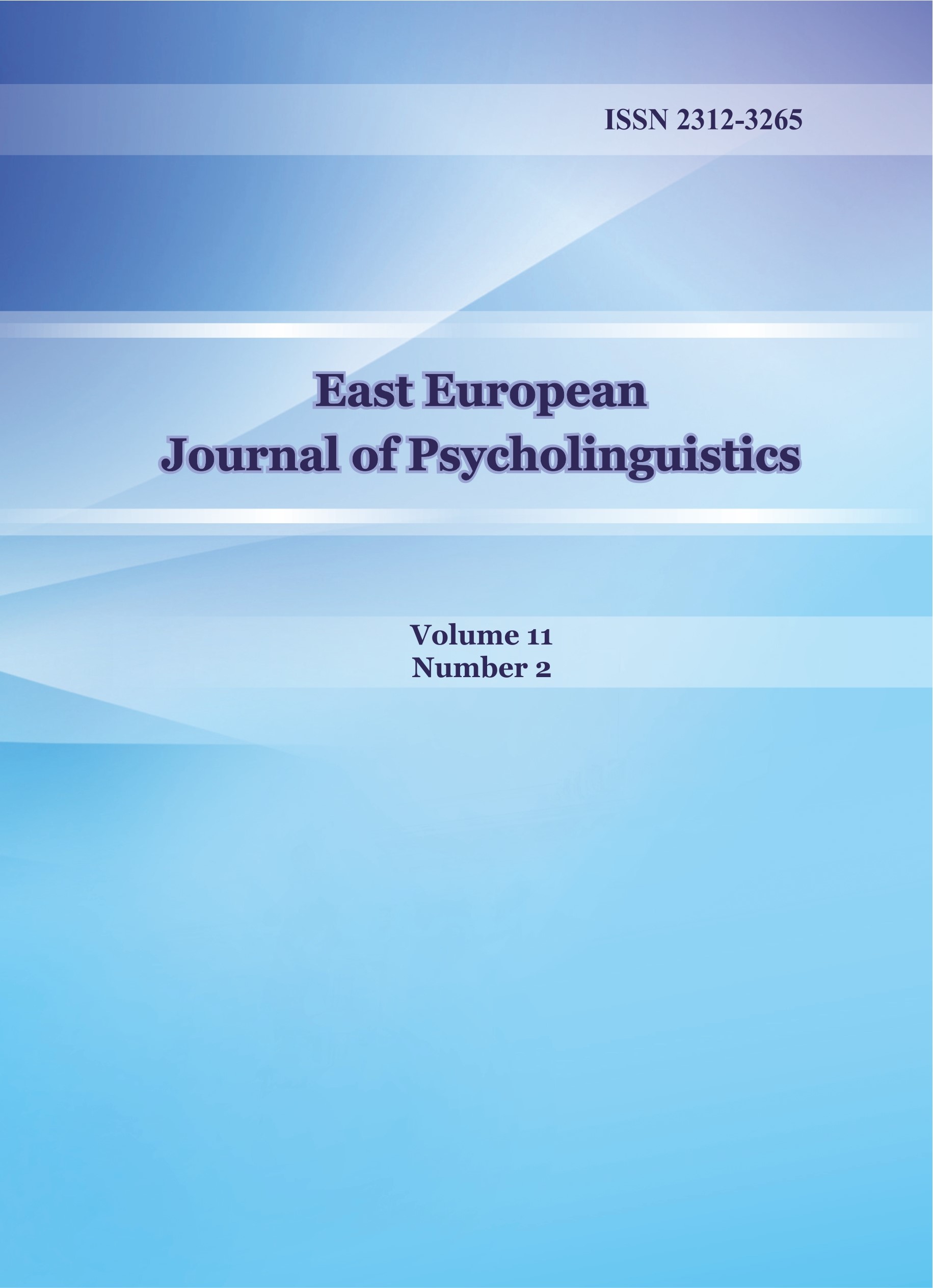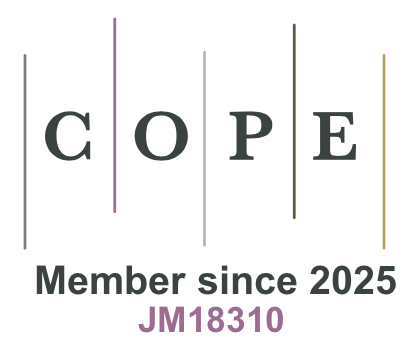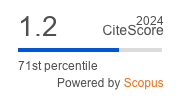Typical linguistic errors committed by tertiary students in legal written outputs
DOI:
https://doi.org/10.29038/eejpl.2024.11.2.nguKeywords:
grammatical structures, instructional strategies, linguistic errors, longitudinal quantitative design, writing performanceAbstract
Legal English writing, which demands precision, formal tone, and adherence to specific conventions, presents significant challenges for English as a Foreign Language (EFL) learners due to the complexity of syntax, specialized legal vocabulary, and rigid grammatical structures. This research examines how these morphological, lexical, syntactic, and mechanical errors impact writing performance and explores the relationship between the frequency of errors and overall writing proficiency. Conducted at Hanoi Law University, Vietnam, the study followed 57 students majoring in legal English through three assessment phases: Pre-Test, Post-Test no.1, and Post-Test no.2. The research utilized a longitudinal quantitative design, analyzing the evolution of participants’ writing over time and evaluating common grammatical errors they faced. Results showed notable improvements in both morphological and lexical accuracy, evidenced by a reduction in error rates and greater consistency in participants’ performance. The proportion of respondents achieving higher proficiency levels (Intermediate and Upper-Intermediate) increased significantly, particularly in morphological and lexical domains. However, syntactic errors exhibited more complex patterns, with some improvements but continued challenges, suggesting that syntactic accuracy requires more focused and specialized intervention strategies. Mechanical errors remained relatively stable, with slight fluctuations, reflecting a steady performance in this area. Overall, the findings highlight the effectiveness of targeted instructional strategies in enhancing learners’ linguistic accuracy, particularly in morphological and lexical errors, while underscoring the need for teachers’ tailored interventions to improve students’ syntactic competence in legal English writing skills.
Disclosure Statement
The authors reported no potential conflict of interests.
Downloads
References
Alghazo, K. M., & Alshraideh, M. K. (2020). Grammatical Errors Found in English Writing: A Study from Al-Hussein Bin Talal University. International Education Studies, 13(9), 1-9. https://doi.org/10.5539/ies.v13n9p1
Ali, S. W., Bay, W. I., & Palilati, N. (2024). Exploring syntactic flaws in students' argumentative writing: An error-driven approach. International Journal of Society Reviews (INJOSER), 2(6), 1487-1501. https://injoser.joln.org/index.php/123/article/view/176
Anh, N., Yen, N., Tho, N., & Nhut, L. (2022). Grammatical errors in academic writing of English second-year students. European Journal of English Language Teaching, 7(6), 70-83. http://dx.doi.org/10.46827/ejel.v7i6.4547
Arachchi, N. W. (2016). A Linguistic Study to Identify Writing Errors in English: Based on Year Eleven Students of Uva Province – Sri Lanka. International Journal of Science and Research (IJSR), 5(10), 133-140. Retrieved from https://www.ijsr.net/archive/v5i10/ART20162028.pdf
Arifin, R., Alkadri, R., Sari, D. P., Resthiningsih, L., & Holish, A. M. (2019). Improving Law Student Ability on Legal Writing through Critical and Logical Thinking by IRAC Method. Indonesian Journal of Advocacy and Legal Services, 1(1), 107-128. https://doi.org/10.15294/ijals.v1i1.33706
Biel, Ł. (2024). Linguistic Approaches. In M. Siems & P. J. Yap (Eds.), The Cambridge Handbook of Comparative Law (pp. 91-112). Chapter. Cambridge University Press. https://doi.org/10.1017/9781108914741.008
Chitondo, L. (2021). An analysis of grammatical errors in student teachers’ written work at Rock view University in Lusaka. International Journal on Studies in English Language and Literature (IJSELL), 9(12), 22-35. https://doi.org/10.20431/2347-3134.0912003
Contreras, T. C. (2024). Unveiling Syntactical Errors in SHS Students’ Position Paper. JETAL: Journal of English Teaching & Applied Linguistics, 5(2), 99-103. https://doi.org/10.36655/jetal.v5i2.1392
Corder, S. P. (1981). Error Analysis and Interlanguage. Oxford University Press
Coulthard, M., Johnson, A., & Wright, D. (2016). An Introduction to Forensic Linguistics: Language in Evidence (2nd ed.). Routledge. https://doi.org/10.4324/9781315630311
Durant, A., & Leung, J. (2016). Language and Law: A resource book for students (1st ed.). Routledge. https://doi.org/10.4324/9781315436258
Enesi, M., & Trifoni, A. (2023). An Analysis of English Writing Errors of Freshmen. Athens Journal of Education, 10(3), 481-506. https://doi.org/10.30958/aje.10-3-7
Ferris, D. R. (2011). Treatment of error in second language student writing (2nd ed.). University of Michigan Press.
Fitrawati, F., & Safitri, D. (2021). Students' Grammatical Errors in Essay Writing: A Pedagogical Grammar Reflection. International Journal of Language Education, 5(2), 74-88. https://doi.org/10.26858/ijole.v5i2.16128
Galdia, M. (2021). Conceptual Origins of Legal Linguistics. Comparative Legilinguistics, 47, 17-56. http://dx.doi.org/10.2478/cl-2021-0011
Garner, B. A. (2023). Legal Writing in Plain English: A Text with Exercises (3rd ed.). The University of Chicago Press.
Glogar, O. (2023). The Concept of Legal Language: What Makes Legal Language ‘Legal‘?. International Journal for the Semiotics of Law, 36, 1081-1107. https://doi.org/10.1007/s11196-023-10010-5
Gustira, I., Eliza., & Artika, F. S. (2020). An Analysis of Syntactic Structures and Error on the Relative Clause as Found in Students’ Academic Writing at the Sixth Semester Students of English Department. Advances in Social Science, Education and Humanities Research, 411, 317-327. https://doi.org/10.2991/assehr.k.200306.054
Hassan, C. N. S. I., Mohammad, N. N. H., Rosly, R., & Wan, Z. W. N. F. (2019). ESL Learners’ Language Errors in a Reflective Writing Assessment. Issues in Language Studies, 8(1), 31-43. https://doi.org/10.33736/ils.1291.2019
Jasim, A. Y., & Tan, H. (2017). Grammar Errors in the Writing of Iraqi English Language Learners. International Journal of Education and Literacy Studies, 5(4), 122-130. https://doi.org/10.7575/aiac.ijels.v.5n.4p.122
Jayasundara, J. M. P. V. K., & Premarathna, C. D. H. M. (2011). A Linguistics Analysis on Errors Committed in English by Undergraduates. International Journal of Scientific and Research Publications, 1(1). Retrieved from https://www.ijsrp.org/research_paper_dec2011/ijsrp-dec-2011-05.pdf
Johnson, C. A., Wilson, J., & Roscoe, D. R. (2017). College student perceptions of writing errors, text quality, and author characteristics. Assessing Writing, 34, 72-87. https://doi.org/10.1016/j.asw.2017.10.002
Kaplan, J. P. (2019). Linguistics and Law (1st ed.). Routledge. https://doi.org/10.4324/9780429450020
Kham, T. N., De, V. V., & Nikolov, M. (2023). Investigating syntactic complexity and language-related error patterns in EFL students’ writing: corpus-based and epistemic network analyses. Language Learning in Higher Education, 13(1), 127-151. https://doi.org/10.1515/cercles-2023-2009
Manik, S., Purba, N., & Rostina. (2017). Investigating Linguistic Errors in English Composition: A Case Study of Non-English Department EFL Undergraduate Students. International Journal of Education and Practice, 5(9), 146-154. https://doi.org/10.18488/journal.61.2017.59.146.154
McMenamin, G. R., Choi, D., Mistry, P. J., Morton, S., & Yasuda, W. (2002). Forensic linguistics: Advances in forensic stylistics. Florida, CRC Press LLC.
Mezrigui, Y. (2021). Common Linguistic Errors in the Writings of Tunisian Third-Year Undergraduates of English: Sources and Possible Remedies. International Journal of Language and Linguistics, 8(3), 1-12. Retrieved from http://www.ijllnet.com/journals/Vol_8_No_3_September_2021/1.pdf
Mooney, A. (2022). Language and Law. Bloomsbury Academic
Le, T. T. D. (2023). Grammatical Error Analysis of EFL Learners’ English Writing Samples: The Case of Vietnamese Pre-intermediate Students. International Journal of TESOL & Education, 3(4), 1-14. https://doi.org/10.54855/ijte.23341
Lin, K. L., Mwinlaaru, I. N., & Tay, D. (Eds.). (2020). Approaches to Specialized Genres (1st ed.). Routledge. https://doi.org/10.4324/9780429053351
Ngaiza, A. G. (2023). A Linguistic Error Analysis of ESL Written Essays by Indian Tamil University Students. Journal of Modern Research in English Language Studies, 10(4), 45-59. https://doi.org/10.30479/jmrels.2023.18208.2160
Nguyen, T. M. (2020a). English language Errors in Academic writing: An analysis of English research papers of Thu Dau Mot University. Thu Dau Mot University Journal of Science, 2(2), 238-254. Retrieved from https://ejs.tdmu.edu.vn/56-a25io
Nguyen, T. H. (2020b). Common grammatical errors in English writing - A case study with second-year students of information technology at HAUI. CTU Journal of Innovation and Sustainable Development, 12(1), 37-44. https://doi.org/10.22144/ctu.jen.2020.005
Nuraini (2019). Grammatical Errors Made by the Students of English Department UISU Year 2018 in Their Writing Class. In The Second Annual International Conference on Language and Literature. KnE Social Sciences. (534-546). https://doi.org/10.18502/kss.v3i19.4884
Pham, Q. N., & Pham, V. P. H. (2024). Common syntactic errors in the writing skills of the 3rd year students at Van Lang University. International Journal of TESOL & Education, 4(2), 118-144. https://doi.org/10.54855/ijte.24427
Phetdannuea, F., & Ngonkum, S. (2016). An Analysis of Interlingual Errors and Intralingual Errors in Thai EFL Students’ Writing at Khon Kaen University. KKU Research Journal (Graduate Studies) Humanities and Social Sciences, 4(2), 35-51. Retrieved from https://so04.tci-thaijo.org/index.php/gskkuhs/article/view/99525
Phuket, P. R. N., & Othman, N. B. (2015). Understanding EFL Students’ Errors in Writing. Journal of Education and Practice, 6(32), 99-106. Retrieved from https://iiste.org/Journals/index.php/JEP/article/view/27322
Pourshahian, B. (2021). A Corpus-Based Study of the Linguistic Errors Committed by the Iranian EFL Learners in English Translation of MA Research Abstracts of Educational Management Based on Liao’s (2010) Model. Education Research International, 9303139. https://doi.org/10.1155/2021/9303139
Singh, C. K., Singh, A. K., Razak, N. Q., & Ravinthar, T. (2017). Grammar Errors Made by ESL Tertiary Students in Writing. English Language Teaching, 10(5), 16-27. http://doi.org/10.5539/elt.v10n5p16
Tomson, G. W. (2024). Jurislinguistics as an independent field of study in the general theory of linguistics. Available at SSRN: https://ssrn.com/abstract=4831888 or http://dx.doi.org/10.2139/ssrn.4831888
Vu, V. T., & Le, T. T. (2023). Legal English Major Students’ Self-Assessment of Use of English Writing Strategies at Hanoi Law University. Science Journal of Tan Trao University, 9(5), 19-28. Retrieved from http://tckh.daihoctantrao.edu.vn/index.php/sjttu/article/view/942
Widyasari, N. P., Ramendra, D. P., & Utami, I. A. M. I. (2022). Grammatical Errors Committed by Students in Writing Cause and Effect Paragraphs. The Art of Teaching English as a Foreign Language (TATEFL), 3(2), 118-126. https://doi.org/10.36663/tatefl.v3i2.429
Williams, C. (2022). The Impact of Plain Language on Legal English in the United Kingdom (1st ed.). Routledge. https://doi.org/10.4324/9781003025009
Xu, Y., & Casal, J. E. (2023). Navigating complexity in plain English: A longitudinal analysis of syntactic and lexical complexity development in L2 legal writing. Journal of Second Language Writing, 62, 101059. https://doi.org/10.1016/j.jslw.2023.101059
Appendix A
CHECKLIST IN ANALYZING ERRORS
1. MORPHOLOGICAL ANALYSIS
Errors in the use of verb
MO1: Wrong verb tense
MO2: Singular verb with plural verb and vice versa
MO3: Incorrect form of verb phrase
Errors in the use of pronoun
MO4: Wrong use of pronoun
MO5: Confusion of its and it’s
Errors in the use of noun and article
MO6: Wrong use of singular noun for plural and vice versa
MO7: Omission of article
MO8: Wrong use of article
Errors in the use of preposition
MO9: Omission of preposition
MO10: Wrong use of preposition
2. LEXICAL ANALYSIS
Adjective error
LEX1: Omission of adjective
LEX2: Wrong choice of adjective
Noun error
LEX3: Omission of noun
LEX4: Wrong choice of noun
Verb error
LEX5: Insertion of verb
LEX6: Omission of auxiliary verb
LEX7: Omission of linking verb
LEX8: Omission of main verb
LEX9: Wrong choice of verb
3. SYNTACTICAL ANALYSIS
Incompleteness
SA1: Subordinate clause for sentence
SA2: Phrase for sentence
SA3: Missing words, subject and verb
Arrangement of Parts
SA4: Wrong word order
SA5: Dangling modifier
Wordiness and ambiguity
SA6: Run-on sentences
SA7: Redundancy
SA8: Ambiguous reference
Parallel structure
PS9: Different parts of speech in series
PS10: Lack of unity
4. MECHANICAL ANALYSIS
Errors in punctuation
MA1: Omission or improper use of period
MA2: Omission or wrong use of comma
MA3: Omission or wrong use of apostrophe
Errors in capitalization
MA4: At the beginning of the sentence
MA5: In the title
MA6: In the proper noun and pronoun
Errors in spelling
MA7: Wrong vowel
MA8: Missing letters
MA9: Confusion of similar words
MA10: Incorrect repeated consonants
Downloads
Published
Issue
Section
License
Copyright (c) 2024 Ai Nhan Nguyen, Tuan Van Vu

This work is licensed under a Creative Commons Attribution 4.0 International License.












 Creative Commons «Attribution» 4.0
Creative Commons «Attribution» 4.0